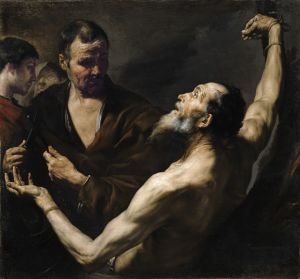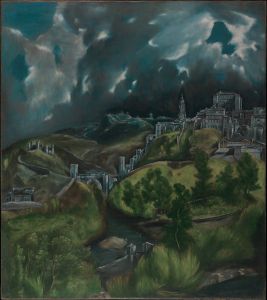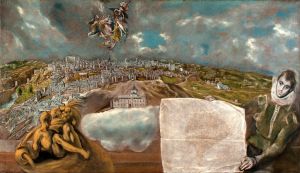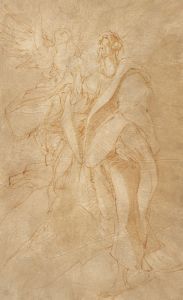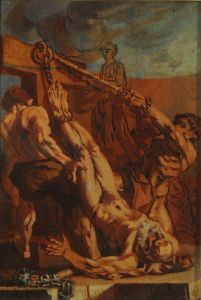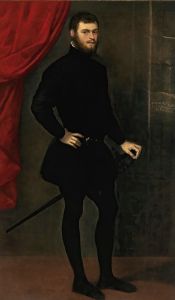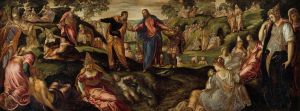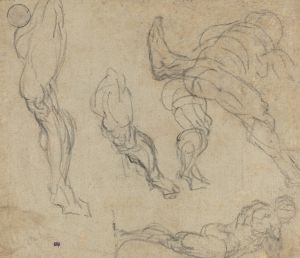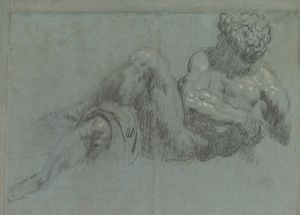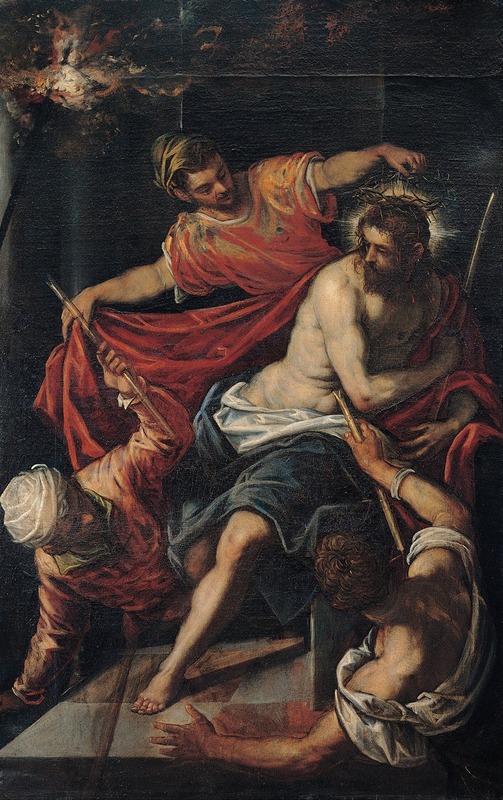
The Flagellation
A hand-painted replica of Jacopo Tintoretto’s masterpiece The Flagellation, meticulously crafted by professional artists to capture the true essence of the original. Each piece is created with museum-quality canvas and rare mineral pigments, carefully painted by experienced artists with delicate brushstrokes and rich, layered colors to perfectly recreate the texture of the original artwork. Unlike machine-printed reproductions, this hand-painted version brings the painting to life, infused with the artist’s emotions and skill in every stroke. Whether for personal collection or home decoration, it instantly elevates the artistic atmosphere of any space.
"The Flagellation" is a painting by the renowned Italian Renaissance artist Jacopo Tintoretto. Tintoretto, whose real name was Jacopo Robusti, was a prominent figure in the Venetian school of painting during the 16th century. He was known for his dramatic use of perspective and light, as well as his energetic compositions and vigorous brushwork.
"The Flagellation" depicts the biblical scene of Christ being scourged before his crucifixion, a common subject in Christian art. This event is described in the New Testament, where Jesus is whipped by Roman soldiers as part of his Passion. Tintoretto's interpretation of this scene is notable for its dynamic composition and emotional intensity.
In the painting, Christ is shown at the center, bound to a column, with his body exposed and vulnerable. He is surrounded by Roman soldiers who are in the act of whipping him. The figures are arranged in a way that creates a sense of movement and chaos, typical of Tintoretto's style. The use of light and shadow in the painting enhances the dramatic effect, with Christ's figure illuminated against a darker background, drawing the viewer's attention to his suffering.
Tintoretto's mastery of perspective is evident in the way he constructs the space within the painting. The architectural elements, such as the columns and arches, recede into the background, creating a sense of depth. This technique not only adds to the realism of the scene but also emphasizes the central figure of Christ.
The emotional impact of "The Flagellation" is heightened by Tintoretto's use of color. The palette is relatively subdued, with earthy tones dominating the composition. This choice of colors serves to underscore the somber and brutal nature of the scene. The artist's vigorous brushstrokes convey a sense of urgency and violence, capturing the physical and emotional torment of Christ.
"The Flagellation" is a testament to Tintoretto's skill as a painter and his ability to convey complex emotions through his art. His innovative approach to composition and his dramatic use of light and shadow had a significant influence on the development of Baroque art. Tintoretto's work, including "The Flagellation," continues to be celebrated for its artistic merit and its powerful depiction of religious themes.
The painting is part of Tintoretto's larger body of work, which includes numerous religious and mythological scenes. His contributions to the art world have earned him a lasting legacy, and his works are held in high regard by art historians and enthusiasts alike. "The Flagellation" remains an important example of Tintoretto's ability to combine technical skill with emotional depth, making it a significant piece in the history of Renaissance art.





